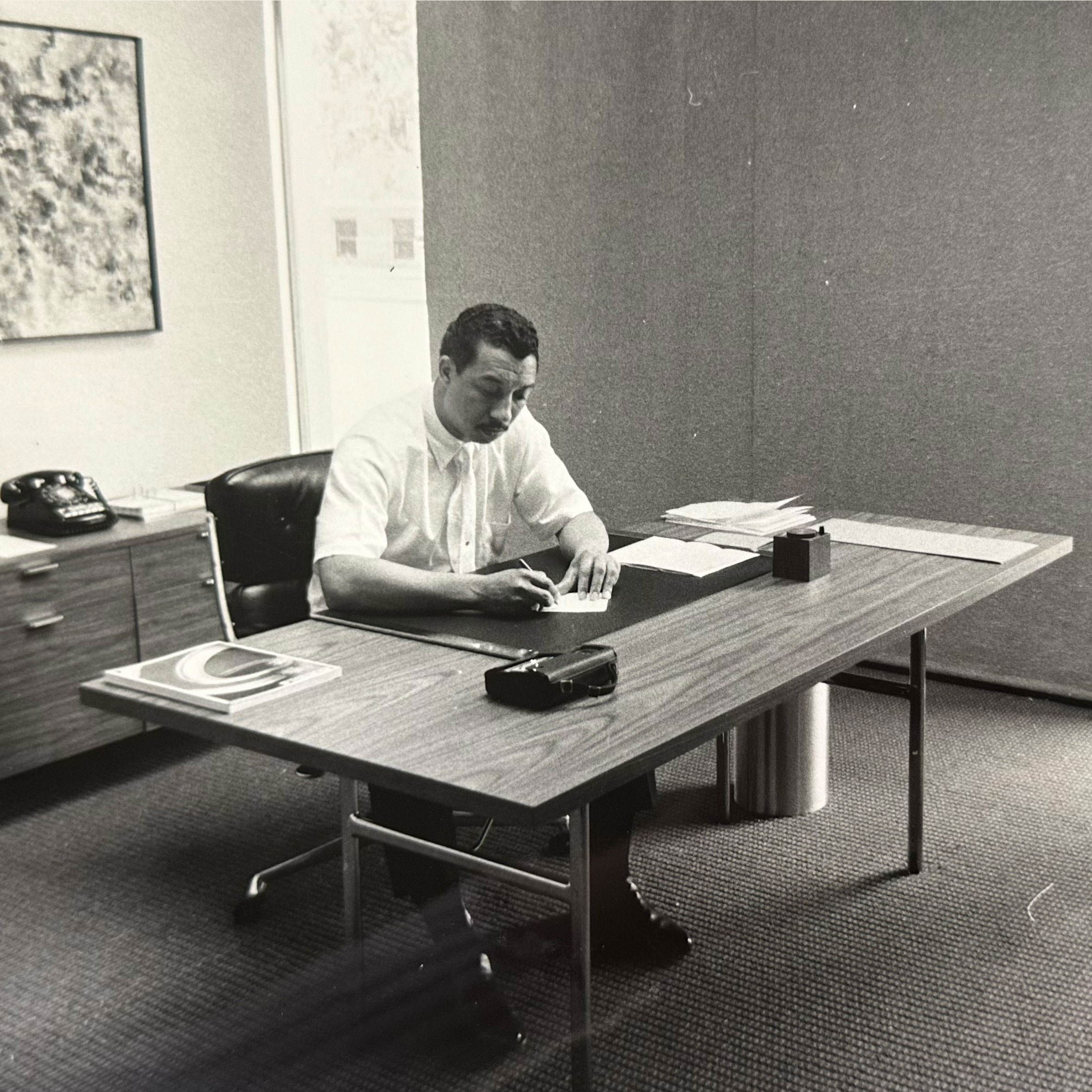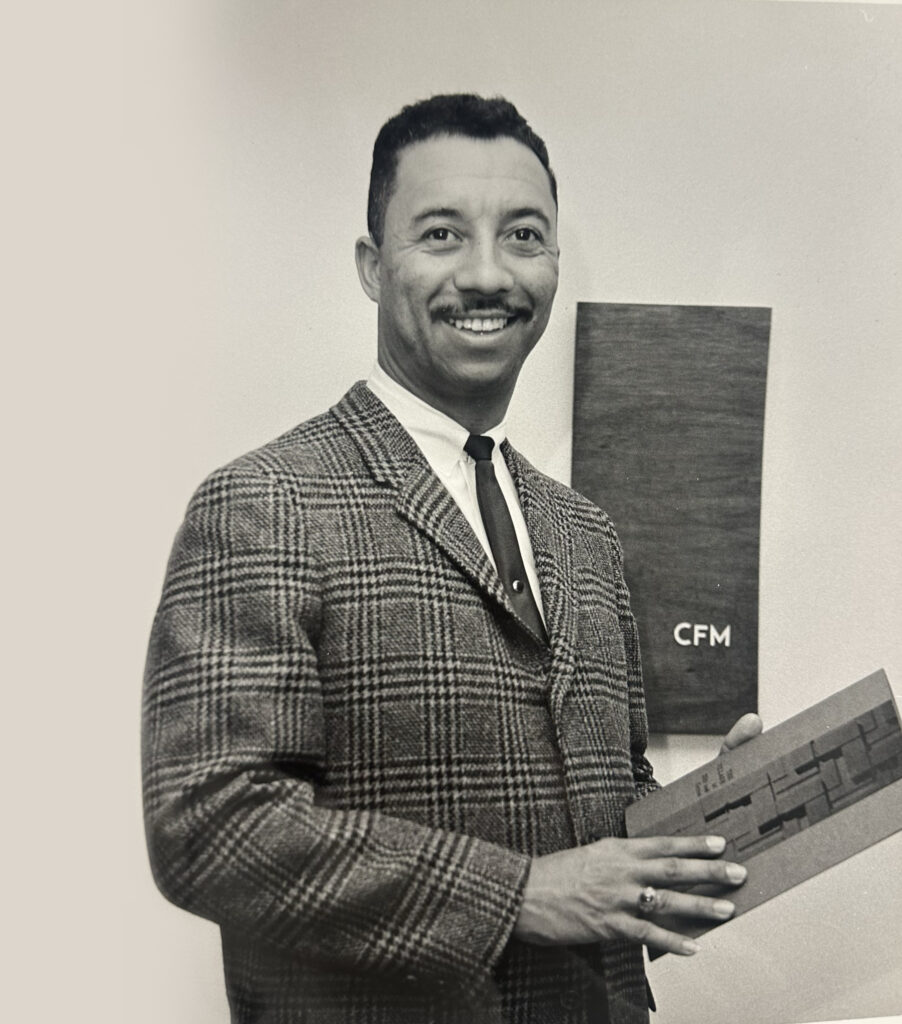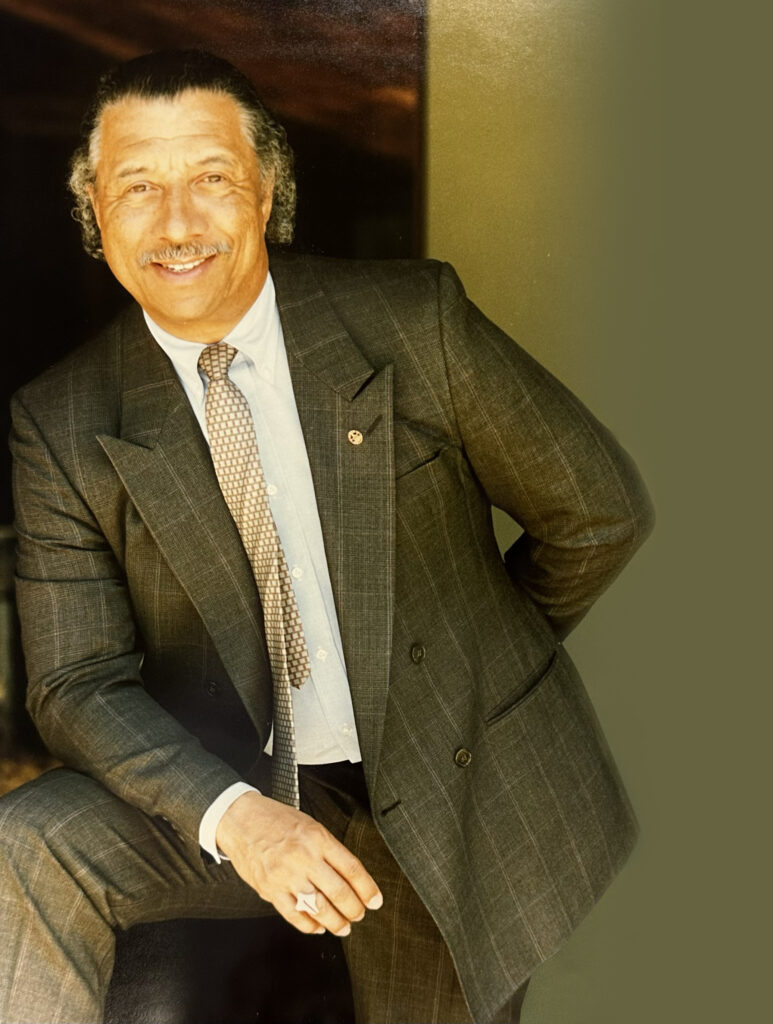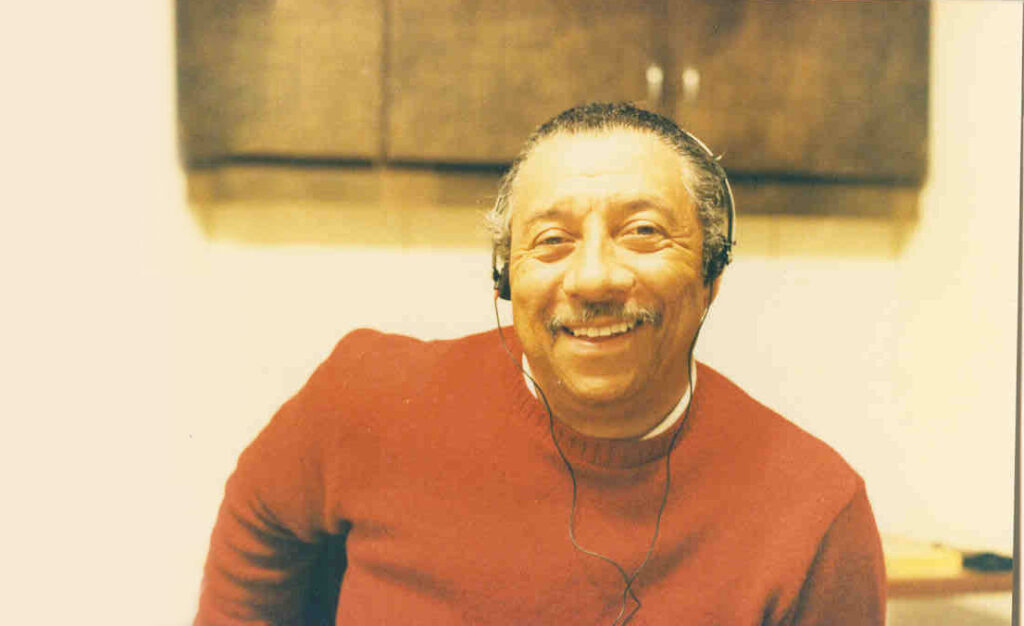
Charles McAfee Interview
Giants Do Exist
An intimate interview with the visionary and founder, Charles McAfee — a deep dive into the creative origins, challenges, and triumphs of our founder.
“What inspired you to start your own firm?”
When I was in high school, I finished all my drafting classes for the whole year in the first semester. So my instructors hired me out to a contract, which I knew nothing about, of course. So what happened was, I was doing a house plan for ten dollars. And I had a 24 x 36in drafting board at my house.
I would draw these house plans. By then, I knew I wanted to be an architect. But, I also was a pretty good basketball player. A pretty good tennis player.
My sister had gone to a special course on aeronautical drafting. And she graduated with honors from Wichita University. My sister went up to KU, where I had dreamed of going to school and found out that black people couldn’t eat in the restaurants. I couldn’t live in dormitories. They were not really welcoming in Lawrence, Kansas. So, by the time I got out of high school, I had gone through enough, what I would call rejection problems.
My Mom and Dad said we need to get you out of here. So they were looking for someplace up north. So, they sent me to the University of Nebraska. and had to pay out of state fees, I went to school, and in the middle of my third year I got drafted by the Wichita Draft Board.
I had to report to the military on March the 6th. So I thought I was dropping 18 hours, but they flunked me on 18 hours. When I finally got back out of the military, I was very serious about becoming an architect. Even more so, because I was shipped to Germany and made the European All Star basketball team two years….
I went back on the basketball team at Nebraska as well as the architecture department. It was hard to catch up. I had to attend summer school at Kansas State. I jumped right back in school, full time at Nebraska. So I was year around attending school. It was a 5-year course degree.
While I was in the military, my then girlfriend, had already graduated from Howard University with a Liberal Arts degree and was attending the University of Indiana, majoring in opera. After I got out of the military and everything, we got married and move to Lincoln, Nebraska.
When I got out of school, the Christmas before graduation, I had made scheduled interviews because I thought I’d go to Los Angeles. So, I had interviews with the three top design firms on the west coast and LA. One of them being the great African American Architect, the first one to become a member of the American Institute of Architects, and the first African American Fellow of the American Institute of Architects, Paul Williams.
He designed the building that is the iconic building at the Los Angeles International Airport. The thing looks like a spider. But another guy came by who had already graduated, and he and my mother talked and he found out I was in town when he was on vacation. His mother and my mother sang in the church choir. I got offered a job, so I decided I’d stay.
They ran out of work, and I started to work for a new firm, in what was supposed to be the best design firm in the city. But they wouldn’t let me meet a client directly. There was some design project that they wanted me to work on, but wouldn’t let me meet with the client. I couldn’t go to meetings because they would have at the Wichita Country Club and the Country Club wouldn’t allow Blacks to visit let alone join.
So, one day on a Wednesday I walked over and said, Friday’s my last day. They said, where are you going? Like, there wasn’t any place else I could go. I said, I’m not at liberty to say it. I didn’t know where I was going. I wasn’t going to take any more of that mistreatment. I went home and walked in the door, and I looked at my wife and I said, let’s start packing.
We’re leaving? She said, Okay, where are we going? I said, I don’t know. So, I walked around the neighborhood up and down the streets. And went down and talked to my Dad. You want to know where the inspiration came from, this is it. I went down and sat there, and I talked to my Dad. Told him about all the offers I had on the East Coast.
I told him about the top firms on the East Coast and the West Coast. He looked at me and he said, why are you not happy? And I looked at him. And what I realized later is, that man knew me better than anybody. And my Dad was always there to give me the best advice in the room. When I said, Daddy, I want to put my name on the door. My father looked at me and said, Let’s do it.
“I love when people make goals, but for me, I personally don’t like the word goal. Instead of goal, I say “great expectations.” Because, when you expect something, you already prepare for it as if it’s coming; as if it’s there.”

My father and I enjoyed putting my office together. We took the second floor of an old building in downtown Wichita. He and I remodeled everything. We built them furniture We and put in the side tables.. We painted the place. We hung new drapes. We did all kinds of stuff. And I only had one job, the Eubanks’ House.
Just one. But my dad, who said, let’s do it. He gave me $50.00 to turn my phone on. That was my real inspiration. And so, the one job I had was a single family house for the Eubanks’, 1,200 square feet. 3 bedrooms, 2 bathrooms. I submitted the house for an award. A couple weeks later I got a letter saying, I had won one of the seven top national design awards from the Housing and Home Finance Agency (HUD).
And the award ceremony was to be held in Washington D. C. Okay, I’ve never been to Washington, but Gloria had. I figured I wouldn’t get lost. But I had to borrow the money from my Mom and Dad to make the trip to Washington. So when we got there, walked in the door, the secretary who was sitting there, who was white, looked up at me and my wife, and the woman started stuttering. She said, Are you, are you Mr. McAfee? I said, Yes. She jumped up and ran out of the room. and I’m looking at my wife and she’s looking at me and I’m going, What’s going on? She came back dragging another white lady out. And they’re both sitting there saying, Dr. Weaver is going to be so proud. Dr. Weaver would become the first African American ever to serve in a president’s cabinet. He became the secretary of the Department of Housing and Urban Development. So, the next day, at the award ceremony, they put these pictures up on the big screen. One of them was I.M. Pei, whose father had sent him to Harvard to become an architect.
The next one was Mies Van Der Rohe. He became the head of the Illinois Institute of Technology Architecture Program. The third was the biggest firm in the country. Skidmore, Owens, and Merrill. Then when it got to the Eubanks’ residence, in Wichita, Kansas, Architect Charles McAfee, you could hear 2,000 people say, who and then where are we is Wichita?
So, I got so much publicity. Within a few months, I had housing projects from Maine to Texas. I’m on an airplane flying everywhere. So that was sort of how I got started.
Right after that, I had a little job in Wichita, and my youngest daughter and my father and I were out working on the job site one weekend, and she was walking with me, and then she made an announcement in her class saying, I want to be an architect like my Daddy. Okay. So that’s where my second real family inspiration came from.
My first inspiration coming from my father Arthur James McAfee Sr., my brother and my sister who were both older than I am. They were so supportive of me that I couldn’t possibly have failed. But I saw what they went through. My sister graduated the top of her class at Wichita University, majoring in science and math.
Nobody recommended her to go to law school, or to go to medical school, nothing. She tried to work in Wichita, couldn’t get a decent job in Wichita and left and went to California. She retired as the head of the outpatient clinic, hematology outpatient clinic at UCLA Medical School.
My brother, who wanted to be a basketball coach, had to go in the military like I did. When he got out, he went to Kansas State, got two more degrees. Got a master’s degree and a specialist degree and almost a doctorate. He finally got a job. But it was in Orlando, Florida, teaching high school basketball. He had to go all the way south to get a job. Then he got his first job, and in four years, he went from one black college to the next and to the next. He ended up at Morehouse College for 35 years. Retired as basketball coach and athletic director. He won more basketball games for Morehouse College than anybody else. His portrait is hung on the honorary wall where Martin Luther King’s portrait is and all the rest of the very famous people. That’s the family I come from, so I have to give everybody in my family all the credit in the world.

“He looked at me and he said, why are you not happy? And I looked at him. And what I realized later is, that man knew me better than anybody. And my Dad was always there to give me the best advice in the room. And when I said, Daddy, I want to put my name on the door. My father looked at me and said, Let’s do it.”
“Do you feel like you exceeded your expectations in what has been accomplished since initially starting the company?”
Despite the challenges and obstacles I faced, I won so many design awards. It seemed like I won a design award every year. In fact, one year I won 3 of the six design awards that were given out by AIA Kansas.
I was able to get big corporate projects. I was exposed to a lot of firms all over the country and they were aware of the work I had done. So yes I have accomplished many things, but we struggled. Some times it was as easy as submitting a request to present our qualifications. I remember sending a letter, and receiving an invitation to present to the selection committee, and getting the project. A big project a 35 million transit center for MARTA, and other times we had projects taken away because of the politics involved.
“Describe the moment you knew this was your purpose. What made it so unshakeable for you?”
The moment I knew this was my purpose came during the early years of my career as an architect, standing in front of one of my first completed projects. It was more than just seeing a building I had designed—it was witnessing how it shaped the lives of those who entered it. That was when I realized architecture wasn’t just about constructing walls; it was about creating spaces that foster connection, belonging, and opportunity.
What made this purpose unshakeable was the deep connection it had to my family. My wife, Gloria, and our daughters, Cheryl, Pam, and Charyl, were my greatest sources of inspiration. Gloria’s unwavering support and belief in my vision gave me the strength to take on challenges I never thought possible.
My daughters reminded me of why I needed to build something lasting—not just for clients, but for them and future generations. The values we instilled as a family—education, community, and resilience—became the foundation for everything I designed.
Every time I walked through a project, I thought of my family and the legacy I wanted to leave for them. It wasn’t just about the buildings—it was about building a better world for them and others to thrive in. That’s what made my purpose so clear and unshakeable. It wasn’t just about architecture – it was about people, starting with those closest to me.
“The world needs all of us to be creative, to motivate, to design new buildings and communities and re-design and make relevant the old ones. Architects must use their skills to create an expression so revolutionary, yet so simple, that the least of those that inhabit the earth feel they have a chance.”

“What are 3 completed projects you are most proud of? Why?”
I’m proud of every project. We’ve done many outstanding projects, and I can’t just pick three. Here are a few of them:
- Eubanks House
- Jackson Mortuary
- Brown House on Clear Lake
- Wichita Eagle Publishing Company
- Cloud House
- Modular Housing Projects
- Atlanta Airport
- 1996 Olympics